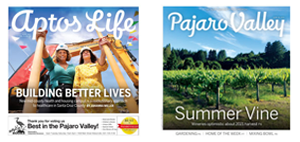There are a lot of colorful names to describe suppliers of illegal booze: Rum runners (self-explanatory), moonshiners, bootleggers. What is a bootlegger? In the late 1800s, it was illegal to give Native American Indians whiskey, so traders would conceal flasks of liquor in their boot tops.
Previously, we learned how prohibition helped to fund organized crime, and how otherwise law-abiding people developed a thirst for “medicinal” Scotch whiskey. But, Scotch alone does not make a well stocked bar, and not all alcohol was smuggled into the county. Gin was actually the most common liquor consumed during prohibition and much of it was produced locally.
How do you make gin in a bath tub? First of all, how do you make alcohol? Alcohol is produced when sugar is fermented by yeast. If that alcohol is distilled it becomes much more concentrated. The sugar from grapes or fruit ferments into wine. If the wine is distilled, it becomes brandy. Cereal grains such as barley and corn need to germinate, which changes their starches into sugar. Then they can be fermented into beer. If the beer is distilled, it can become whiskey. The grains or fruit used, and the aging process, determines what the finished product is called. Also, regular table sugar can be fermented into alcohol and then distilled. Unaged, undiluted alcohol is known as white lightning, moonshine, or similar names.
Alcohol for drinking is usually aged to develop character and smoothness. Also, drinking pure alcohol is not a pleasant experience, so water is added to reduce the impact. Since the alcohol produced locally during prohibition was neither aged nor watered down, the consumer had to take these matters into their own hands. Homemade gin was made by adding juniper berries, other ingredients, and water to the alcohol in a jug or tub and allowed to rest for a short period of time. Moonshine often came in five-gallon cans. Full sized bath tubs would have been too large for most parties so smaller metal or ceramic wash tubs were probably the norm. People used to go to parties where they would vote on the best bathtub gin, or other homemade concoctions. Often, people would mix their drinks with fruit juice or other ingredients to improve the taste which lead to an increase in the popularity of mixed drinks and cocktails.
Distilling alcohol became big business. Stills operated in many places on and off the beaten track and were producing tens of thousands of gallons a day. Not everyone in law enforcement was against alcohol. Some officers were found in possession, others would tip off moonshiners when a raid was about to take place. A Ben Lomond distillery was told that they were about to be raided so they packed the still and its equipment into a truck and hauled it up Trout Gulch Road. Unfortunately, they dropped a three-foot section of copper condensing coil on the road and it was later found by the mail carrier who reported it to the Prohibition Service. On Nov. 30, 1932, three men were arrested 3.5 miles from Aptos in a barn on the Loma Prieta Road. The equipment seized was valued at $20,000. Its capacity was reported at 500 gallons a day. Three 9,000-gallon vats and about 200 gallons of alcohol were seized.
There were many stills in the mountains that used sugar to produce alcohol. A big truckload of sugar would be delivered into Aptos Village at night. It would be unloaded into smaller trucks behind the railroad freight depot and the smaller trucks would take off in all directions. One store in Aptos was capable of producing 800 gallons of alcohol per day. Locally produced wine was also distilled into brandy.
In Aptos Village, there was a poolroom and bar where you could buy any kind of liquor that you wanted. They paid protection money, so they always knew when a raid was planned by the Sheriff. Evidently, the Deer Park Tavern in Rio Del Mar did not have the same sort of insurance. The tavern was raided several times and by 1932, all the furniture, alcohol and fixtures (including slot machines), were seized in order to shut the place down.
The “Roaring Twenties” were not all fun and games. There were large amounts of money to be made and the people involved played rough. Some bootleggers stashed their booze in coves near Davenport, only to have it stolen by locals. Hijackings were not uncommon. Moonshine deliveries to the local speakeasys were normally conducted by six men in a car with two 50-gallon barrels of “product.” In the southern United States, moonshiners souped-up their cars to outrun the Federal Revenue officers. Eventually, those same drivers formed NASCAR, the National Association for Stock Car Auto Racing.
Follow this link for part one of the story https://aptoslife.com/article/the-water-of-life
(Top beach photo Concrete Ship Palo Alto (in background) is shown in 1931.)
(Bottom photos color: Dancing in the Banquet Room of the Rio Del Mar hotel. Black and white is Dancing in the Rainbow Ballroom on the Concrete Ship Palo Alto. And The Rio Del Mar Hotel is shown in about 1930. All photos courtesy Aptos History Museum archives)











